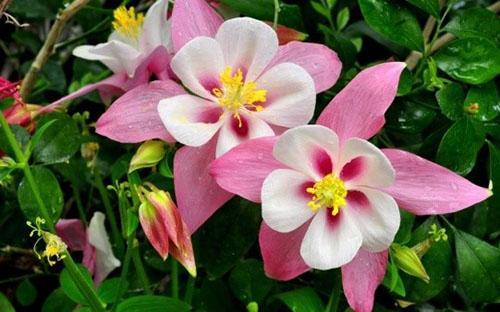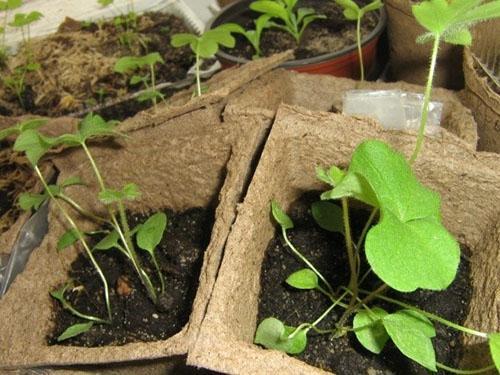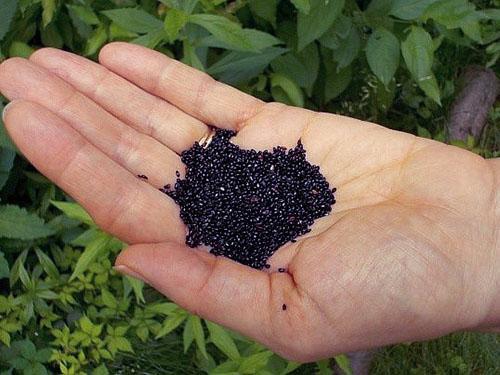Key rules for caring for aquilegia
 Aquilegia belongs to plants of the buttercup family. It can grow in one place for several years without losing its decorative properties. It is widely used in landscape design when creating blooming compositions. In order for aquilegia to grow well and please with its flowering, you must follow the simple rules of planting and subsequent care.
Aquilegia belongs to plants of the buttercup family. It can grow in one place for several years without losing its decorative properties. It is widely used in landscape design when creating blooming compositions. In order for aquilegia to grow well and please with its flowering, you must follow the simple rules of planting and subsequent care.
Reproduction techniques

- Seeds. After the end of flowering, seed pods are formed on the plant. Their contents are dried and stratified at a temperature of +5 degrees. When growing aquilegia from seed, it is important when to plant them. It is best to do this in early spring directly into the ground. If there are frequent frosts in your area, it is better to resort to the seedling growing method. To get early shoots, you can plant aquilegia before winter.

- By dividing the bush. The aquilegia root system is fragile and easily damaged. Therefore, the division of the bush is carried out only in exceptional cases. Only plants that have reached the age of three years can be propagated by this method. Dig up the root system in early spring or late autumn. After that, the roots are washed with water and all shoots are cut off. The root system is cut in half so that healthy buds remain on both sides. Places of cuts must be sprinkled with finely ground charcoal. Such seedlings will take root for a long time and difficult.

- Cuttings. It is necessary to harvest cuttings in early spring before the buds begin to bloom. It is recommended that the cut sites be treated with a root formation stimulator and planted in pots filled with soil. It will take about three weeks for rooting.
The easiest and fastest way is to multiply by seeds. This aquilegia planting allows you to get strong, healthy plants without much effort.
Choosing a place and landing rules
 The beauty and abundance of flowering will largely depend on the quality of the soil and the correct choice of the location of the flower bed. The plant thrives better in light partial shade. It is recommended to plant it near shrubs or small trees with a thin crown. In the shade, the aquilegia will lose its brightness, the flowers will be smaller.
The beauty and abundance of flowering will largely depend on the quality of the soil and the correct choice of the location of the flower bed. The plant thrives better in light partial shade. It is recommended to plant it near shrubs or small trees with a thin crown. In the shade, the aquilegia will lose its brightness, the flowers will be smaller.
The soil must be loose. It must contain a sufficient amount of nutrients. The plant does not tolerate stagnant moisture at the roots. Therefore, it is necessary to organize a drainage layer before planting.
Planting and caring for aquilegia outdoors will be easier if you maintain the correct distance between the plants. About 40 cm should remain between them. Up to 10 plants can be placed on one square place of the soil.
If you are sowing seeds directly into open ground, then you need to plant them to a depth of about half a centimeter. Seedlings are planted in small holes. It is recommended to dust them with ash and fertilize with humus.
Care features
 Planting and caring for aquilegia does not require special skills and abilities. It is enough to adhere to a few simple recommendations:
Planting and caring for aquilegia does not require special skills and abilities. It is enough to adhere to a few simple recommendations:
- The plant tolerates a lack of moisture well. But you cannot completely deprive him of water. Watering should be moderate as the soil dries out.
- Weed the weeds and loosen the soil around the plants regularly.
- Aquilegia loves well-fertilized soils.Add a small amount of compost from time to time. It is recommended to apply mineral fertilizers no more than twice a season. A good result is given by annual soil renewal. To do this, remove the top layer of the old soil and fill in the new one.
- If you plan on harvesting seeds, wrap the pods with gauze before they open. This will help prevent self seeding.
- Preparing for the winter aquilegia in the fall is pruning. The stems are cut at the level of the basal leaves. This will allow the plant to winter better and not lose its properties. For insulation, sprinkle on top with a mixture of peat and sand.
- An aquilegia transplant in the fall is carried out every five years. You should not do this more often, since the plant does not take root well. Dig up the whole bush along with the ground, cut off all the shoots. Remove damaged roots. You can simultaneously divide the bush. Drop off at a new location. Healthy shoots can be used for composting.
Compliance with the rules of planting and caring for aquilegia flowers in a photo can be easily found on the Internet today. Observing them, you will get a beautiful healthy flower bed that will delight you with flowering all summer.
Pest and disease control
 Improper planting and care of aquilegia leads to the appearance of diseases, the photos of which are often frightening. Among the most common problems are:
Improper planting and care of aquilegia leads to the appearance of diseases, the photos of which are often frightening. Among the most common problems are:
- Powdery mildew. With this disease, the leaves turn brown and curl into tubes. Over time, they completely die off and disappear. You can deal with the problem with a urea solution. They are sprayed with the plant in the late evening, when the sun has already gone down. Some growers use green soap for this purpose. You can also use specialized chemicals.
- Gray rot. It is impossible to cope with such a problem. The infected plant must be completely dug up and burned.
- Rust. The fight against this disease is carried out using specialized drugs. One of the best is Topaz. It must be used in strict accordance with the instructions.
- Damage by pests. The most common are spider mites, aphids, nematodes, scoops. Chemicals are used to combat them. The drug gives a good result "Actellic"And" Karbofos ". It is not always possible to defeat the nematoda, you will have to change the site. Plants that are resistant to nematodes, such as ray, garlic or cereals, can be planted on the affected soil.
Even an inexperienced florist can cope with the cultivation of aquilegia. It is enough to strictly adhere to all the rules of care.